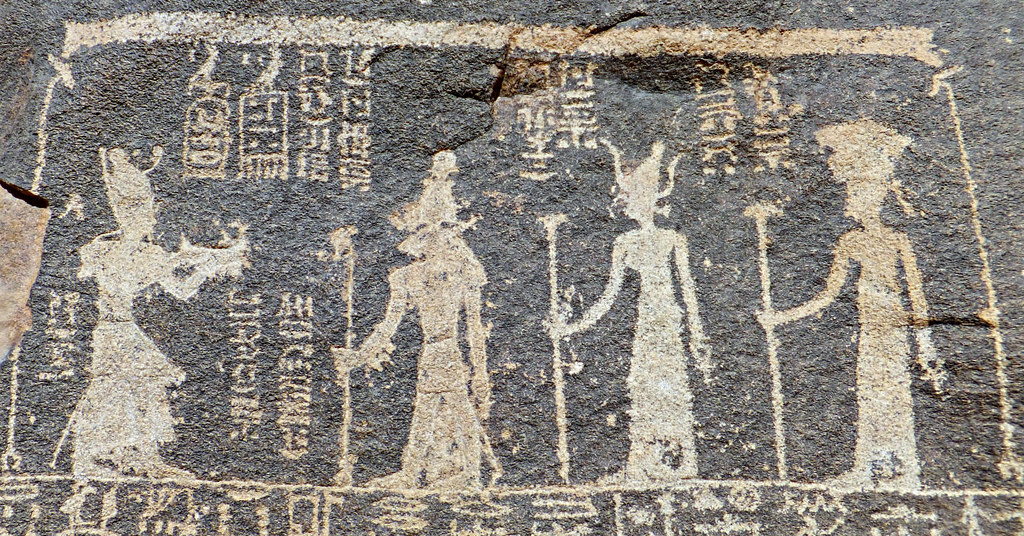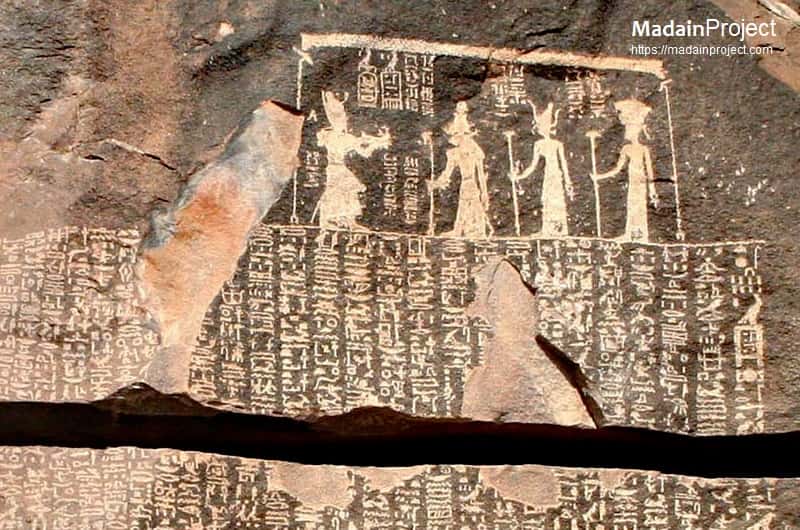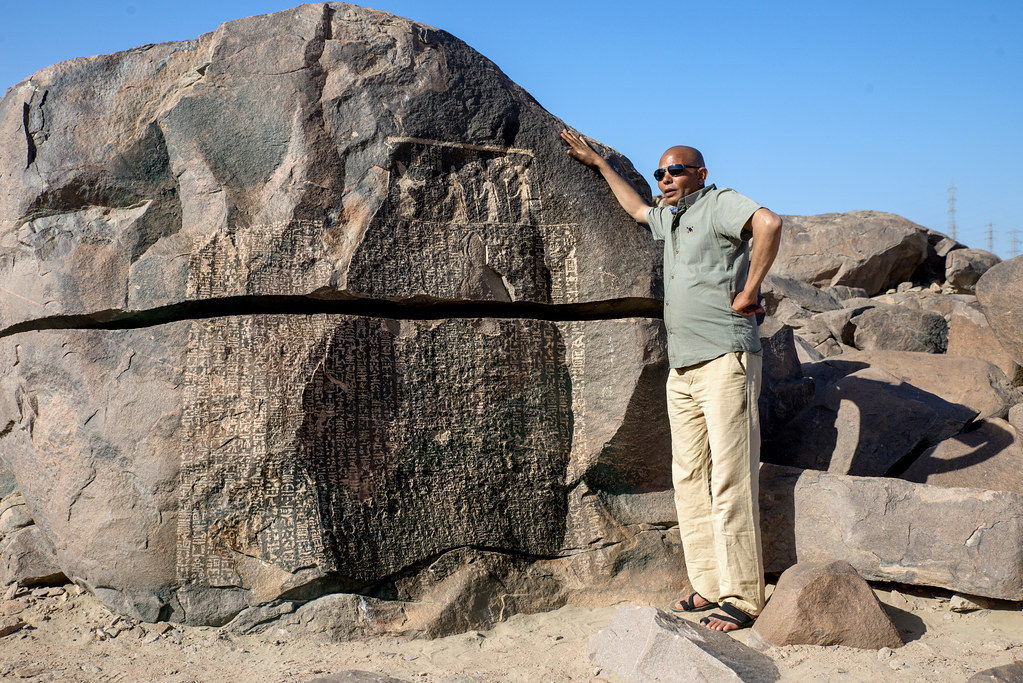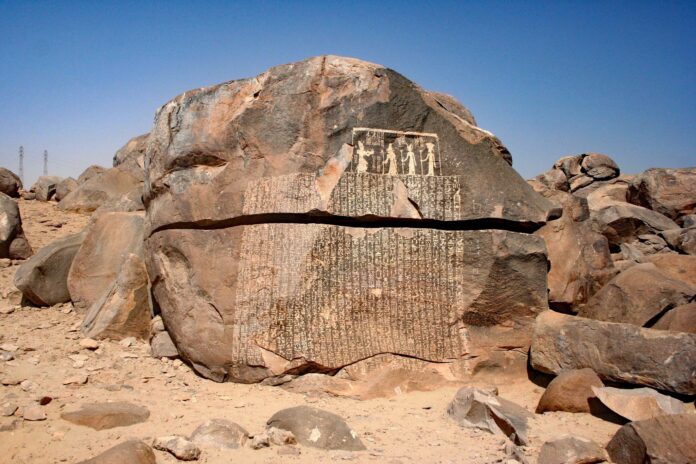The Famine Stela, an intriguing inscription etched in Egyptian hieroglyphs, stands on Sehel Island in the Nile, near Aswan in Egypt. This ancient relic recounts a harrowing seven-year period of drought and famine that plagued Egypt during the reign of Pharaoh Djoser of the Third Dynasty. Though it chronicles events from Djoser’s time, the stela itself is believed to have been inscribed much later, during the Ptolemaic Kingdom, which ruled from 332 to 31 BC.
Historical Context
Pharaoh Djoser, who reigned from approximately 2670 to 2640 BC, is best known for commissioning the Step Pyramid at Saqqara, the earliest colossal stone building in Egypt. His reign is often considered a period of significant innovation and monumental construction. However, the Famine Stela reveals a darker chapter of his rule marked by a severe and prolonged famine.
 The Inscription’s Content
The Inscription’s Content
The Famine Stela’s narrative begins with the Egyptian people suffering from a debilitating drought that caused the Nile to fail in its annual inundation. This failure resulted in widespread famine, as the Nile’s floods were crucial for irrigating crops and sustaining agricultural productivity. The inscription describes the hardships faced by the people and the desolation that swept across the land due to the scarcity of food and resources.

Pharaoh Djoser, deeply troubled by the suffering of his people, sought guidance from the gods. According to the stela, Djoser had a dream in which the god Khnum, the deity associated with the Nile and its inundation, appeared to him. In this dream, Khnum explained that he had withheld the floods due to neglect and insufficient offerings. The god promised to restore the Nile’s inundation if proper reverence and offerings were made.
Religious and Cultural Significance
In response to this divine message, Djoser ordered the construction of a temple dedicated to Khnum and ensured that the god received the offerings and worship he was due. Following these actions, the Nile’s floods resumed, bringing an end to the devastating famine and restoring prosperity to the land of Egypt.

The Famine Stela not only highlights the interdependence between the Egyptian rulers and their gods but also underscores the significance of the Nile in the life and survival of ancient Egyptian civilization. It serves as a testament to the ancient Egyptians’ belief in the power of their deities and the divine nature of their pharaohs, who were seen as intermediaries between the gods and the people.
Ptolemaic Period Inscription
Although the events described in the Famine Stela date back to the Third Dynasty, the stela itself was inscribed much later, during the Ptolemaic Kingdom. This period of Egyptian history was marked by the rule of the Greek Ptolemaic dynasty, which began with the conquest of Egypt by Alexander the Great in 332 BC and ended with the death of Cleopatra VII and the Roman conquest in 31 BC. The Ptolemaic rulers sought to legitimize their reign by connecting themselves with the ancient traditions and history of Egypt, and the Famine Stela is an example of this effort to link their rule with the illustrious past of the pharaohs.
Conclusion
The Famine Stela is a remarkable artifact that offers a window into the ancient world, shedding light on the challenges faced by Pharaoh Djoser and his people, the religious beliefs that shaped their responses, and the enduring significance of the Nile River in their lives. It stands as a poignant reminder of the resilience of human societies in the face of natural calamities and the enduring legacy of ancient Egypt’s cultural and religious heritage.




